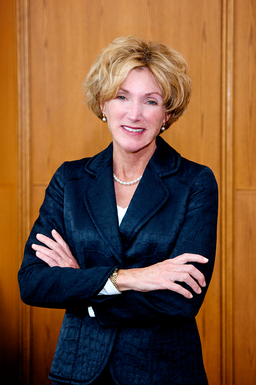President Snyder talks finance at open USG meeting
Case Western Reserve University has seen a multitude of changes over the past few years, and on Sept. 8, students were invited to hear about even more new developments. At an open general assembly of the Undergraduate Student Government (USG), President Barbara R. Snyder delivered information on a range of ongoing projects meant to improve the CWRU campus and provide aid to its students.
The subject that sparked the most discussion was the university’s goal to make itself more affordable for students.
“It’s not about the sticker price of tuition, but about the average loan debt, since that’s really about what people pay for education,” said Snyder.
With lower debt for graduating students in mind, the university is beginning a mini-campaign to gain scholarship dollars. This is a continuation of previous efforts to reduce student debt, which Snyder says is $28,500 for CWRU. This is a significant reduction from 2011, when CWRU students graduated with an average of $40,000 worth of student loans.
In comparison, the national average student loan debt is currently estimated—based on the available data—to be above $30,000, making the national average of $26,600 in 2011 seem relatively low.
Money is a concern for the CWRU student body, whose questions for Snyder often came back to some aspect of financial aid. Studying abroad, aid for international students and co-op fees were all discussed.
Concern exists surrounding the affordability of studying abroad, as students are required to pay CWRU tuition while attending schools that actually cost less. For example, King’s College London charges international students $23,380 per year and the National University of Singapore charges them $20,542, though these prices vary somewhat depending on what you study.
Some students also choose to go somewhere with a higher cost of living, making worries about affordability even more potent.
“The cost of running the university is the same even if you study abroad,” Snyder reminds students, adding that most schools require that students abroad pay tuition to their home university.
However, according to Snyder, only a small percentage of CWRU students studied abroad until recently. As a result, CWRU has begun looking for opportunities to increase the financial aid options for students who choose to go abroad. The university is also trying to implement more international co-op and internship programs.
For international students studying at CWRU, need-based aid is available, although merit aid is not an option. Snyder says that the focus with these students is to meet their demonstrated financial need.
Yet another facet of the financial world at CWRU is the endowment, which supports both students and faculty. Goals for the endowment include yearly increases, and at this point, $17.8 million of its $43 million go to student scholarships, according to Snyder. This is out of the $90 million total that goes towards scholarships.
Though Snyder spoke about many of the costs associated with going to CWRU, sophomore Rachel Hudspeth, wished that Snyder would have addressed recent increases in tuition and housing.
“I just don’t get why you have to pay $11,000 [per year] to live in The Village but only $400 [per month] to live in Little Italy,” Hudspeth said.
One overarching goal that Snyder stressed was that one of the Board of Trustees’ investment committee’s aims is to ensure intergenerational equity for students.
“We want to balance the needs of the people who are here today and who will be here in the future,” said Snyder.

Anastazia Vanisko is copy editor for The Observer and writes for the news section. She is a third-year political science and dance double major, with minors...


